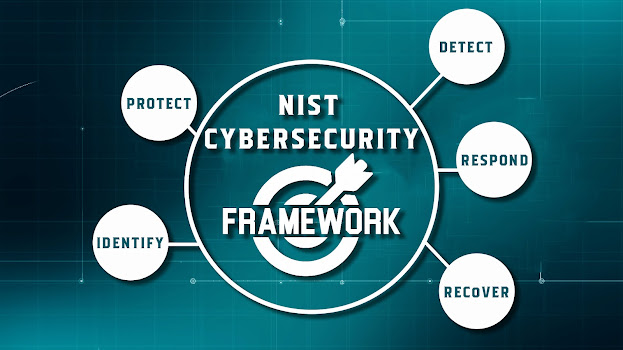Augmented reality (AR) represents an advanced technology that integrates components from the real world with computer generated virtual elements. In doing so, it overlays digital content onto a users' real time perception of reality. Diverging from virtual reality (VR). Whereby an entirely simulated environment supersedes the users surroundings, AR augments and enriches the existing environment through supplementary digital features. Various devices enable users to partake in AR experiences, including smartphones, tablets, smart glasses or headsets. Leveraging these devices' camera functionality. sensors and display capabilities enables AR to seamlessly integrate digital information into ones authentic surroundings. AR stands out in its capacity for interaction and engagement with actuality. The technology achieves this by identifying genuine objects in the physical domain, locations, or designated markers. drawing upon this knowledge to generate and present pertinent digital content. This content encompasses an extensive range of materials such as text, images, three, dimensional models animations, videos and even auditory elements. AR boasts a wide array of applications spanning multiple industries. Within the gaming industry. For instance. AR empowers users to interact with virtual objects or characters superimposed upon their immediate physical environment.
In education, it can enhance learning experiences by providing visualizations, explanations, or interactive elements. In healthcare, AR can aid medical professionals in visualizing and manipulating complex data or surgical procedures. In architecture and design, it enables clients to visualize how proposed structures or modifications will appear in real-world settings. The increasing availability and advancements in AR technology have led to its growing adoption in consumer products and services. One popular example in the realm of social media platforms are AR filters. These filters allow users to apply various effects or objects onto their faces or surroundings in real time.
Augmented Reality (AR) holds immense promise in revolutionizing science education as it offers students a dynamic and engaging learning experience. Integrating AR into science education offers several important benefits:
Benefits of Using AR in Science Education
- Increased engagement and motivation
- Improved understanding of complex concepts
- Enhanced spatial reasoning skills
- Increased creativity and problem-solving skills
1. Increase engagement and motivation: AR technology adds a new level of excitement and engagement to science lessons. By merging the virtual and physical realms, students are offered an interactive educational encounter that grabs their attention and sparks their curiosity. This heightened engagement and drive lead to enhanced learning achievements as students actively engage in the learning procedure.
2. Improve understanding of complex concepts: Science education often involves complex and abstract concepts that can be challenging for students to comprehend. AR can help bridge this gap by providing visual and interactive representations of these concepts. For example, AR can allow students to explore the inner workings of the human body, observe chemical reactions in real-time, or study celestial bodies and their movements. By providing a clearer understanding of these complex concepts, AR facilitates deeper learning and retention.
3. Enhance spatial reasoning skills: Science education often involves understanding the spatial relationships between objects and phenomena. Interacting with three dimensional models and visualizing scientific phenomena in real world contexts through AR can enhance students' spatial reasoning skills.
4. Increase creativity and problem-solving skills: The utilization of AR technology in education facilitates the development of critical thinking, creativity, and problem solving abilities among students. By engaging with AR applications students are prompted to analyze and interpret data establish links between various concepts and effectively employ their knowledge in real world scenarios. This not only cultivates a more thorough grasp of scientific principles but also promotes innovative thinking as students are encouraged to expand beyond conventional methods.
In the realm of science education, one can observe a plethora of applications utilizing augmented reality (AR). Notably, some commonly observed examples are as follows:
Examples of AR in Science Education
- Interactive 3D models
- Virtual experiments
- Simulations
1. Interactive 3D Models: Augmented Reality (AR) provides students with the opportunity to enhance their understanding of complex scientific concepts. By overlaying digital 3D models onto the real world students can visualize intricate structures and processes in a way that is both interactive and immersive. Through AR students are able to explore and manipulate virtual objects in real time. For instance. They can examine the anatomy of the human body or delve into the structure of molecules by viewing them through 3D AR models.
2. Virtual Experiments: Virtual experiments provide students with the opportunity to conduct scientific inquiries and observe the outcomes of their experiments in a safe and cost effective manner. Through augmented reality (AR) students can simulate chemical reactions, physics experiments, and various scientific phenomena without the need for physical materials or specialized lab equipment. This hands on experience not only allows students to gain practical skills but also promotes critical thinking and prediction making abilities.
3. Simulations: AR simulations offer students the opportunity to engage in realistic and immersive experiences that would otherwise be impossible to replicate in a traditional classroom environment. Through virtual field trips. Students can explore natural habitats, ecosystems, and geological formations, which enhances their understanding of scientific concepts by providing them with a tangible context. Additionally. Simulations enable students to interact with virtual objects and environments to experience physics principles like gravitational forces and wave propagation.
In conclusion, AR in science education provides interactive 3D models, virtual experiments, simulations, and personalized learning experiences. By leveraging this technology, educators can empower students to explore and comprehend complex scientific concepts in a more immersive and engaging manner. Integrating AR into science education offers numerous benefits. AR has the potential to revolutionize science education by increasing engagement and motivation improving understanding of complex concepts enhancing spatial reasoning skills and promoting creativity and problem solving abilities. As AR technology continues to evolve. Its integration in science education will become more important in preparing students for future challenges.
Related Articles:
⭕️The Ultimate Guide to Internet Safety [2023]
⭕️ Get Started with Robotics | A New Era of Automation.






0 Comments